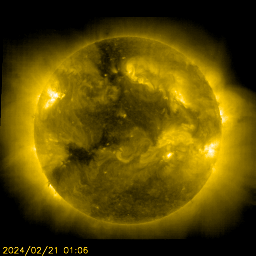Après le succès du lancement de la mission sur Mars, l'ISRO se lance un nouveau défi. Prévu pour 2017-2018, la mission solaire de l'agence spatiale indienne a été revue à la hausse. Aditya-1 (soleil en Hindi), ne se limite plus à un simple satellite avec pour objet d'étudier la couronne solaire, mais à cinq charges utiles. Parmi les équipements : un télescope sensible aux ultraviolets, afin d'observer le disque solaire dans son ensemble et les tempêtes solaires, dont l'influence se fait sentir sur l'atmosphère terrestre. Le satellite comportera aussi un détecteur de particules pour échantillonner les vents solaires, un spectromètre à rayons X et des coronographes.
Pour l'Inde, il s'agit "de mieux étudier le soleil, et de se distinguer des projets des autres pays", explique un administrateur du Département of Space (ministère de l'Espace), dans une interview au Sunday Express. Le satellite d'Aditya-1 sera positionné, comme SoHo - l'Observatoire solaire et héliosphérique développé par l'Agence spatiale européenne et la Nasa - sur le point L1 (Lagrange L1), à approximativement 1,5 millions de kilomètres de la terre. Le coût n'est pas encore dévoilé. La majorité du budget sera consacrée à l'envoi du satellite vers le soleil.
L'Inde rejoindra ainsi "le club d'élite, jusque là composé de l'ESA et de la NASA" estime le Sunday Express. Alors que la dernière mission solaire était le fruit d'une collaboration entre ces deux agences, l'agence indienne s'affiche seule dans ce projet d'envergure.











